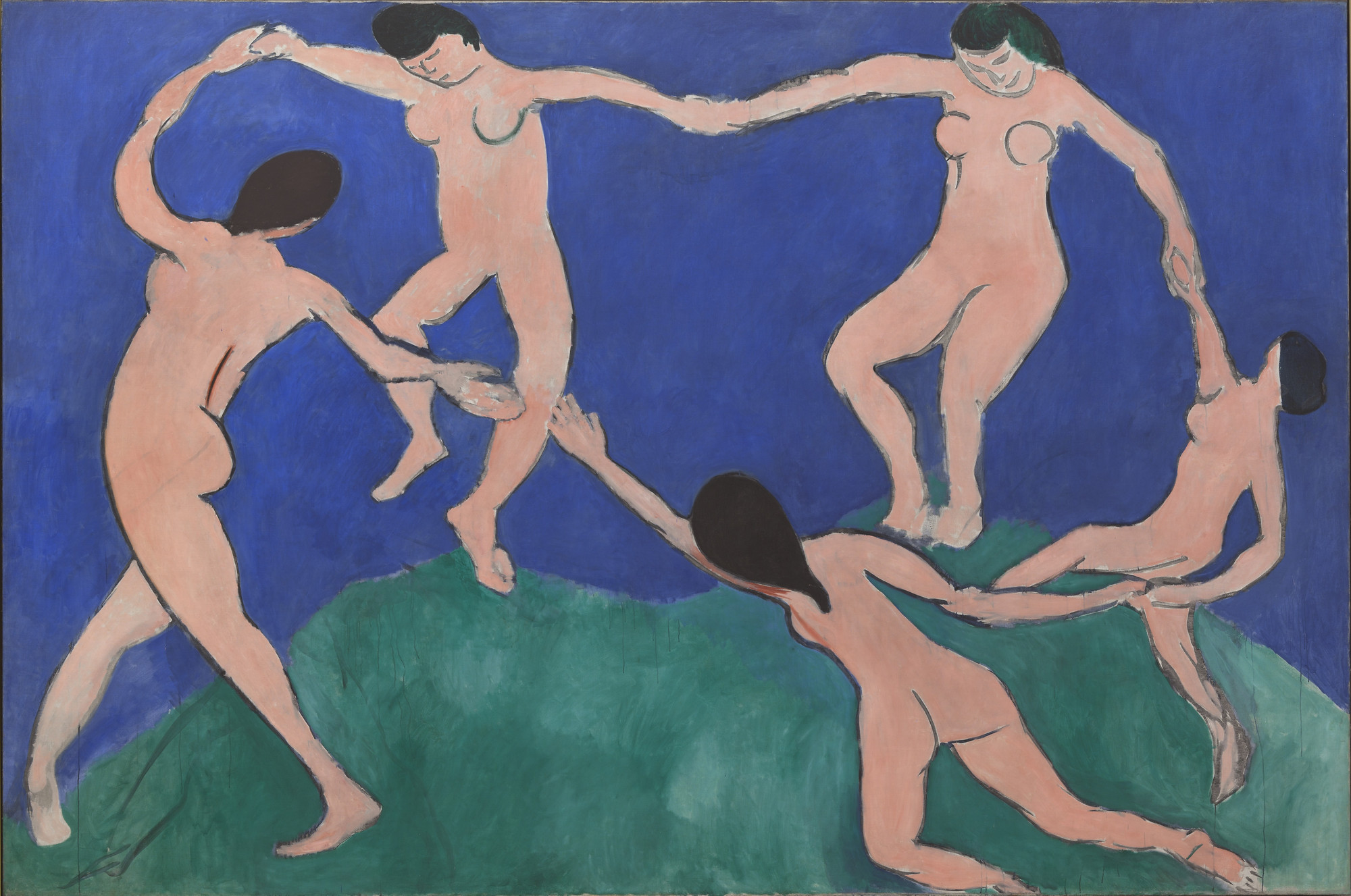Franz von Stuck was a German artist who rose to fame during the 19th and 20th century. Growing up, his enthusiasm towards painting and sculpting helped him establish many different pieces of art, statues, sculptures, paintings, and more. Heavily influenced by the work of Arnold Bocklin, his main subject matter was more or so focused on mythology. Nudity, and seduction were also incorporated into his art to create a deeper meaning to his dark and horrific creations. One of the greatest pieces to ever have been produced by Stuck is Inferno. With my time at the Met, I realise this is an great painting to depict modernism in the 20th century.
The Inferno is a reference to Dante Alighieri’s medieval epic of journey through hell. In his painting, he depicts symbols of hell, or the so-called underworld, which is a snake, a demon, and a flaming pit. Heavily inspired by Auguste Rodin’s The Gates of Hell, Stuck helped recreate the dark side by portraying dark colors, and sadistic expressions. Importantly, the correlation of the painting and modernism, is remarkable. A few notable things I’ve noticed in this painting helped to determine that this piece of art stood out to me more than the others.
One of the features in this painting which depicts modernism to me are the poses. Each and every human being shown in the painting are unique due to it’s posing and action taking place. A snake wrapped around a female, whilst a man in fetal position, are heavily portrayed as if they’re both experiencing anguish and pain in the underworld. Their facial expressions, and bodily movements shows that everything they’re experiencing is surreal. Nudity is heavily portrayed in this painting and creates a much more deeper meaning to what is depicted because of the striations, the veins, the muscles, on each human being.
With the beginning of the Modernism era, artists began finding new forms of expression to create remarkable pieces to which they believed was an advancement prior to the 19th century. Stuck’s form of creating a sinister and dark art form was praised heavily by the people and what was needed to create surrealism and expressionism. As new forms of art were coming into play, Stuck took a different route to create his own genre, which is heavily looked upon and praised up until this day. I am gladly able to say, Inferno really hit the ball out of the park with this one in terms of modernism.


 Henri Emile Benoit Matisse was born on December 31, 1869 in a small area in Le Cateau located on the border of France and Belgian. In a two room house were the floor is dirt and the roof leaks every time it rains, he lived with his two parents named Emile Hippolyte Matisse (father) and Ann Heloise Gerard (mother). When Henri studied law in 1890 but suffered from appendicitis and then two years later started to become more interested in painting and gave up law career. Other French painters influenced like Paul Gauguin, and Paul Cezanne, but studied more in dept of the dutch painter Vincent van Gogh in the beginning of 1899. In 1906 he became an avid print maker. Henri Matisse was internationally popular during his lifetime and he died in Nice on November 3, 1954 and was
Henri Emile Benoit Matisse was born on December 31, 1869 in a small area in Le Cateau located on the border of France and Belgian. In a two room house were the floor is dirt and the roof leaks every time it rains, he lived with his two parents named Emile Hippolyte Matisse (father) and Ann Heloise Gerard (mother). When Henri studied law in 1890 but suffered from appendicitis and then two years later started to become more interested in painting and gave up law career. Other French painters influenced like Paul Gauguin, and Paul Cezanne, but studied more in dept of the dutch painter Vincent van Gogh in the beginning of 1899. In 1906 he became an avid print maker. Henri Matisse was internationally popular during his lifetime and he died in Nice on November 3, 1954 and was 
 Modernist writers had introduced a new and different form of writing to the world where the absurd are welcomed and acceptable. Modernist literature puts societal appropriations to the test in bringing up raw, gore, and otherwise known as shameful themes to a story. The element of absurdity and risk taking in terms of questionable material to the properness of society is a part of both Modernist literature and Picasso’s piece Les Demoiselles d’Avignon.
Modernist writers had introduced a new and different form of writing to the world where the absurd are welcomed and acceptable. Modernist literature puts societal appropriations to the test in bringing up raw, gore, and otherwise known as shameful themes to a story. The element of absurdity and risk taking in terms of questionable material to the properness of society is a part of both Modernist literature and Picasso’s piece Les Demoiselles d’Avignon.





